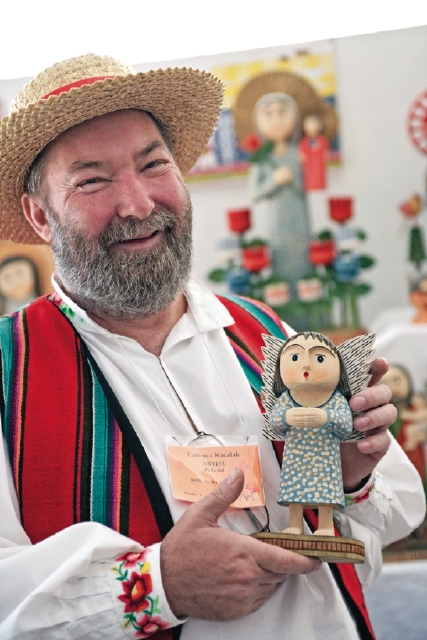Here in New Mexico, we’re used to swimming up to our necks in folk art. From traditional punched tin and Catholic religious pieces to handmade textiles and ceramics by Native American artists, the stuff is everywhere. It’s been a significant part of our thriving art economy for at least the last century.It’s rare, though, to get a comprehensive glimpse of folk art being created in other parts of the planet. Thankfully, Santa Fe boasts an exceptional museum, the Museum of International Folk Art, designed to expose New Mexicans to the exceptional diversity of global folk art. Likewise, this weekend, you can get an even better idea of the scope of folk cultures around the world by visiting the third annual Santa Fe International Folk Art Market.But before we dive into all that, what is folk art, anyway? This is a notoriously hard question to answer. “Folk art is handmade,” says Ruth McCutcheon, executive director of this year’s market. “It represents traditional culture. It’s the artistic expression of daily life. Folk art objects can be utilitarian, everything from plates to cups to bedspreads, but it always involves an artistic element passed down through generations.”This is what makes it so appealing, even to people who aren’t immersed in the art world. The astonishing success of the Folk Art Market is living proof of this. “The market started in 2004,” says McCutcheon. “That first time around, the organizers expected four to five thousand people—12,000 came. Last year, we had 18,000.”It’s anyone’s guess how many will show up this year, so try to get there early. And don’t come expecting to find examples of New Mexican folk art. As McCutcheon points out, there are lots of local stores and at least two other major Santa Fe art festivals where you can find plenty of that. The Folk Art Market is designed to highlight the very best folk art being created outside the United States. You’ll find beaded collars from Equador, sand paintings from Botswana, wooden figurines from Poland, woodblock prints from Brazil, drums from Nigeria, opera masks from China, sequined flags from Haiti, embroidered clothing from Kyrgyzstan and much, much more, all of the finest quality, created by 100 artists from 33 different countries.McCutcheon is quick to emphasize, however, that the market is about more than shopping. This year, the organizers have put together a lengthy roster of educational programs and live entertainment as well. The project is also designed to foster economic and cultural sustainability for folk artists worldwide. With this in mind, the organizers offer generous financial aid to attending artists, and the market does not receive a commission on work sold during the event.“We’ve also redone the layout of the market,” she says, “so there’s more space for artists and visitors. It’s been the major challenge of our success, how to comfortably accommodate all these people.”Yet McCutcheon is happy with the way the market has evolved in its short span of existence. “The event has such a special flavor to it,” she says. “We’re transforming Milner Plaza into a real folk art market. The booths are decorated. There’s a gorgeous awning over the entrance. It definitely won’t be like being on Museum Hill on a regular day.”
The Santa Fe International Folk Art Market runs Saturday, July 8, and Sunday, July 9, from 9 a.m. to 5 p.m. at Milner Plaza on Museum Hill. Tickets for Saturday are $10 in advance, $15 day of event. Tickets for Sunday are $5. They include free admission to the Museum of International Folk Art and the Museum of Indian Arts and Culture. Order at www.folkartmarket.org.










